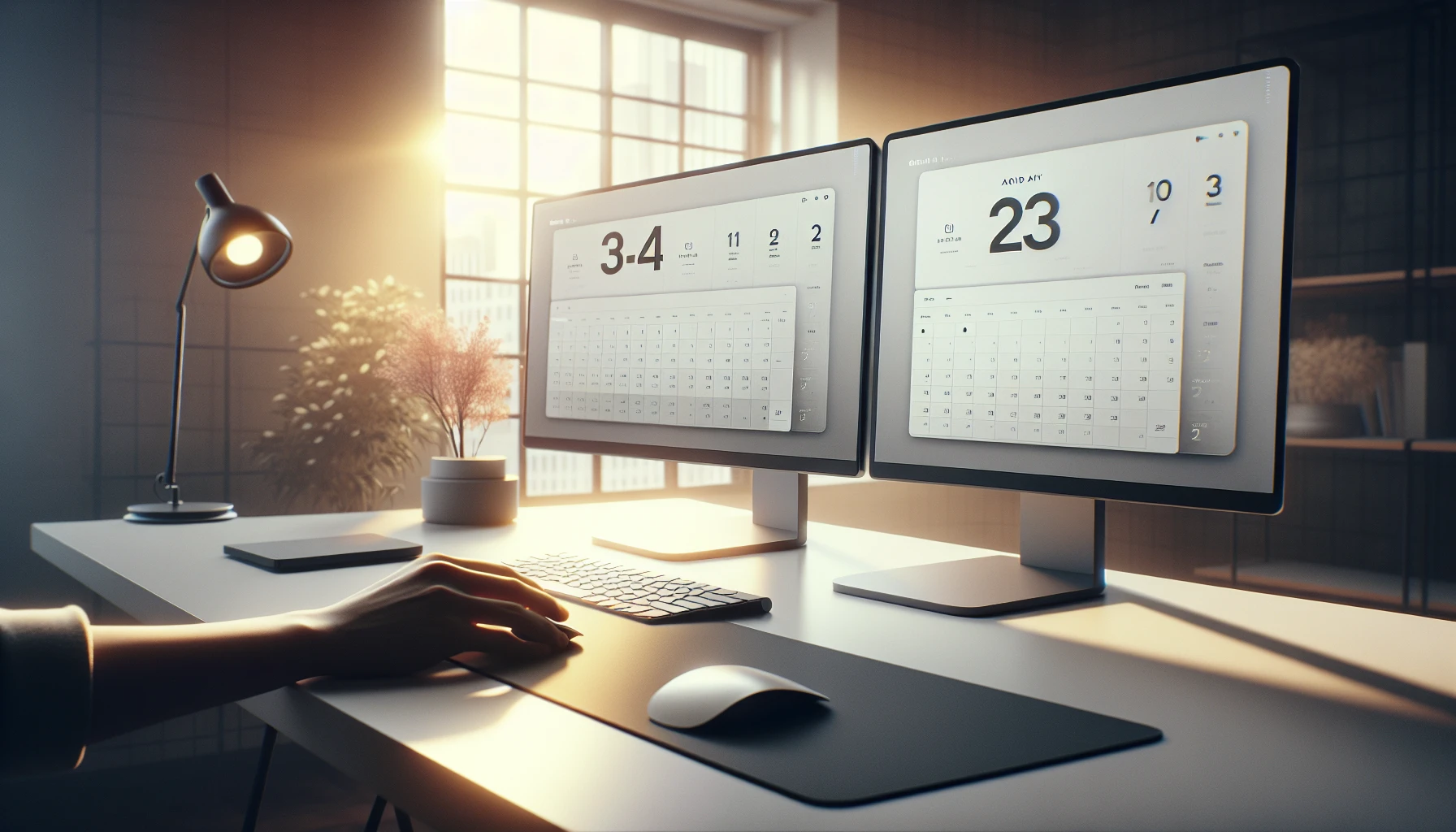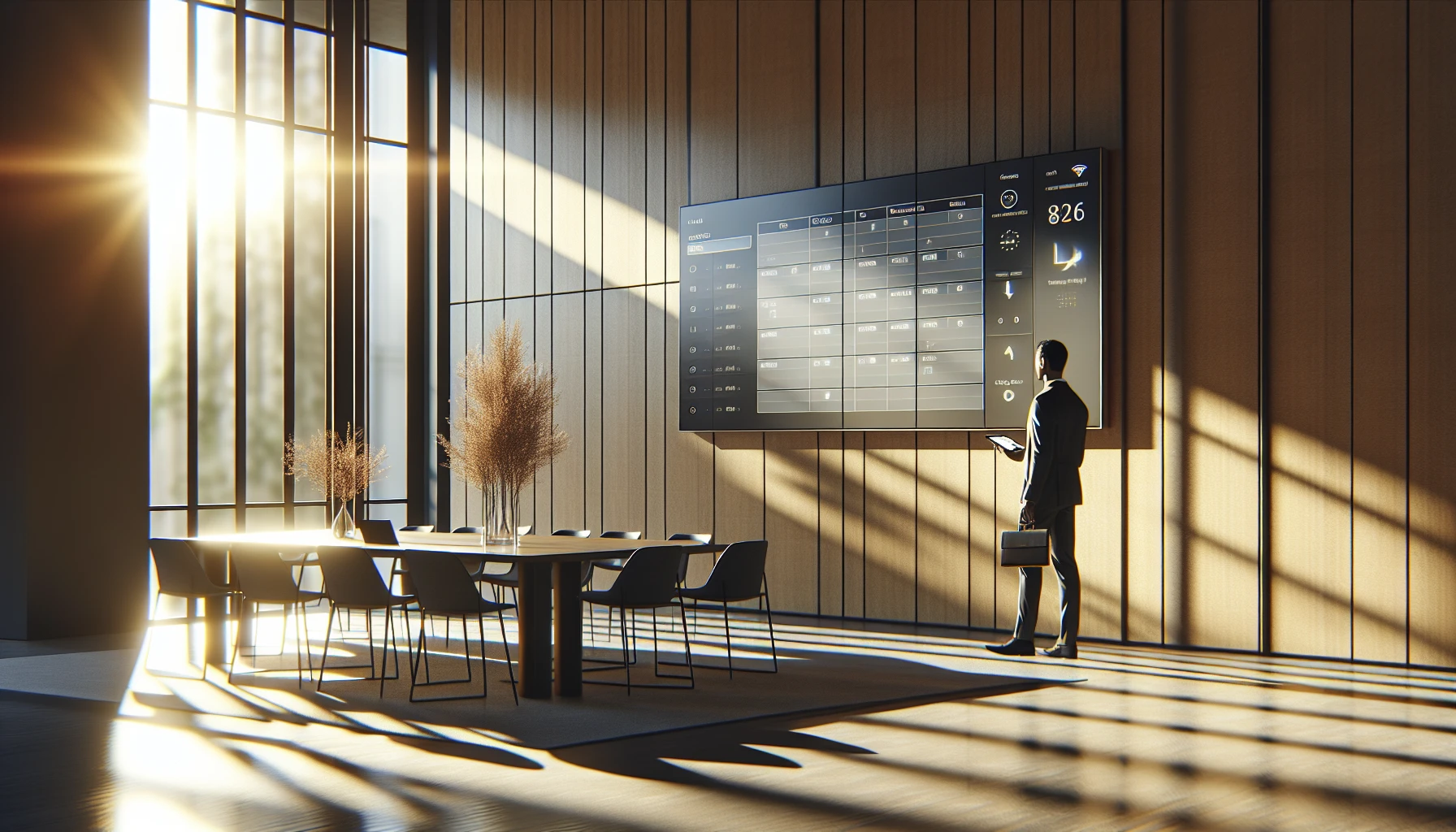· Ricardo Batista · 13 min read
Sync Google Calendar with Outlook - How to link calendars
This guide helps you sync your Outlook and Google calendars with handy tools, step-by-step methods and tips to avoid mix-ups.

Many people find that juggling calendars on Outlook and Google sometimes can get messy, so this guide aims to help you sync up your events and reminders. We show you step-by-step techniques and useful tools to keep track of things with easier setup. It is all laid out in a relaxed way, so you’ll get it soon.
Key Takeaways
- Syncing between Google Calendar and Outlook is pretty simple once you know where to click
- Using built-in features and tools like Zapier keeps your events aligned and reduces errors
- One cool thing: our system automatically pings the attendees that arrive late to your meetings, showing off our smarts in automatic reminders
- Troubleshooting is usually just a matter of double-checking settings and re-sharing calendar links
- Third-party tools like OutlookGoogleCalendarSync can help if the basic sync isn’t enough and you need extra options
Overview of Outlook Calendar and Google Calendar Integration
Outlook Calendar and Google Calendar are two of the most popular calendar tools used today. Both tools offer powerful built-in features to manage meetings, events, and reminders. Microsoft’s Outlook Calendar comes with robust scheduling tools built directly into Microsoft 365, making it easy to schedule, reschedule, and even send late-arrival notifications to meeting participants. Google Calendar, on the other hand, shines with its simplicity, sharing capabilities, and easy integration with other Google apps.
Microsoft pages highlight many scheduling features that allow users to automatically ping attendees who join meetings late. This capability ensures that everyone stays on track and understands the timing of a meeting. Outlook, with its detailed workspace, offers additional features like built-in reminders and customizable alerts, which are helpful for busy professionals.
In practice, combining both calendars – syncing Google Calendar with Outlook – can lead to a more productive workflow. By linking these calendars, you can manage all your events in one place while enjoying some of the advanced tools from each platform. Whether you are scheduling important business meetings or planning study groups, having one unified view prevents any conflict and makes it easier to track all activities.
Step-by-Step Guide to Syncing Calendars
Here we will explore methods to sync Google Calendar with Outlook. The guide includes two popular methods: using Google Calendar sharing and using an Outlook subscription. Each method has its strengths based on whether you need real-time updates or simple one-way syncing.
Using Google Calendar Sharing
Syncing Google Calendar with Outlook via sharing is a straightforward process:
- Open Google Calendar in your web browser.
- Go to the settings by clicking on the gear icon and selecting “Settings.”
- In the left-hand menu, select the calendar you want to share.
- Under the “Access Permissions” section, click on “Make available to public” or choose “Share with specific people” if you want tighter control.
- Copy the public URL provided for the calendar or select the “Secret address in iCal format” for private sharing.
- Open Microsoft Outlook on your desktop.
- Navigate to the calendar view and select “Add Calendar” then “From Internet.”
- Paste the URL you copied from Google Calendar and click “Yes” to subscribe.
This approach ensures your Google Calendar events appear in Outlook. It does not always support two-way syncing; any changes made in Outlook might not reflect back on Google Calendar. However, it’s ideal if you primarily use Google Calendar to add entries and want a consolidated view in Outlook.
For additional details related to Google Calendar functionalities, you can refer to Google Calendar Help.
Using Outlook Subscription Methods
Outlook subscription methods focus on subscribing to the calendar feed to view Google Calendar events in Outlook:
- First, generate the iCal URL in Google Calendar by navigating to the settings of your desired calendar.
- Look for the option labeled “Secret address in iCal format” and copy the URL.
- Open Outlook and click on “File,” then “Account Settings,” and choose “Account Settings” again from the dropdown.
- Under the Internet Calendars tab, click “New” and paste the copied URL.
- Once added, Outlook will periodically update to show new events from your Google Calendar.
This method is often recommended by Microsoft Support as it enables users to access the most recent schedule without extra manual steps. It also retains a basic level of detail that supports meeting reminder features, such as automatically pinging attendees who are late. For further support, check out the detailed instructions provided on Microsoft Support.
Open-Source and Third-Party Tools for Syncing
While built-in methods are great, some users prefer using open-source projects or third-party tools. These solutions can be more flexible, allowing for two-way syncing and integration with additional platforms in your workflow.
OutlookGoogleCalendarSync from GitHub
OutlookGoogleCalendarSync is a popular open-source tool maintained on GitHub. It offers a free solution for those who need two-way synchronization between Outlook and Google Calendar.
- The tool allows updates made in one calendar to reflect in the other.
- It supports a variety of customization options, such as setting custom intervals for checking updates.
- Download and installation instructions are available on its GitHub repository.
This tool is particularly beneficial for users who rely heavily on both Microsoft 365 and Gmail. Its automated syncing minimizes the need to check each calendar separately, saving time and reducing the risk of missing important meeting reminders.
Using an open-source tool also provides opportunities for customization. Users can modify the code if needed or check community forums and stack overflow threads for troubleshooting tips and updates.
No-Code Automation via Zapier
Another notable tool is Zapier, a no-code automation platform that connects various apps without writing a single line of code. Zapier streamlines workflows by setting up “Zaps” between Outlook Calendar and Google Calendar.
- Create a new Zap on Zapier that triggers when an event is created in one calendar.
- Set up an action that replicates that event in the other calendar.
- You can further customize these Zaps to include additional actions such as sending meeting reminders or notifications.
Zapier is known for its ease of use and flexibility. With simple drag-and-drop configurations, even non-technical users can establish powerful integrations. This is particularly useful when you need to manage notifications that automatically alert meeting attendees if they are running late, ensuring everyone stays informed.
Troubleshooting Common Syncing Issues
Despite the simplicity of these methods, syncing issues can still occur. Addressing and troubleshooting these problems promptly helps maintain a smooth workflow.
Common Syncing Issues
- Timing Delays: Synchronization might not be instantaneous, sometimes causing delays in displaying the latest events.
- Duplicate Entries: Occasionally, the same event might appear twice if the sync settings are misconfigured.
- Update Failures: Changes made in one calendar may not always update in the other, particularly with one-way sync methods.
- Authentication Problems: Sometimes, issues with permissions and login details can block the calendar integration.
Best Practices when Working with Microsoft 365 and Gmail
To avoid many common pitfalls when syncing calendars, consider the following best practices:
- Ensure that both calendars are using the latest URL formats or app settings. For example, if you use Outlook, check that you are on the latest version of Microsoft 365.
- Maintain updated and matching time zones in both Outlook and Google Calendar settings.
- Regularly check the sync status and manually refresh if needed. It is helpful to have a visual reminder on your desktop, such as an alert popup or ping mechanism via meeting reminders.
- When faced with ongoing issues, consult community advice on forums like Microsoft Community and expert guides on sites like alphr.com.
- Use internal resources like this Calendar Reminder for tips on ensuring your meeting notifications pop up correctly and reach all intended attendees.
By following these steps and best practices, you can reduce the chances of encountering syncing issues. Additionally, you benefit from a more streamlined calendar experience, making it easier to manage both personal and professional commitments.
Enhancing Productivity by Managing Calendar Conflicts
One of the most overlooked aspects of calendar management is the proactive resolution of scheduling conflicts. With the right tools and methods, you can avoid double bookings and missed meetings – particularly important when meeting reminders automatically ping attendees who arrive late.
Meeting Reminders and Attendee Management
Most calendar tools offer robust reminder features that can be customized to suit your specific needs. Consider these tips:
- Set up automatic reminders for meetings at multiple time intervals (e.g., 15 minutes before, and then a follow-up 5 minutes before the meeting starts).
- Use a tool or automation (like those provided by Zapier) to automatically send notifications if attendees are marked as late. These reminders can help prompt participants to adjust their arrival rather than entering a meeting unannounced.
- Review settings in both calendars to ensure they are configured to send alerts across devices. This helps maintain consistency, especially when using mobile platforms.
Meeting reminder functionalities also help to integrate seamlessly with productivity apps. For example, linking notifications with tools like Outlook Meeting Reminder ensures that every attendee gets a reliable ping if they’re late, reducing wasted time and miscommunication.
Customizing Calendar Settings and Proactive Management
Every user’s needs are different, so take advantage of customizable settings in both Outlook and Google Calendar. Here are some ways you can optimize your calendar setup:
- Adjust your notification settings: Both calendars offer a wide range of notification options. Customize alerts to include sound notifications, email reminders, or even SMS alerts for important events.
- Organize events with color coding: Use color codes to separate work meetings, personal events, and urgent reminders. This visual cue helps in quickly identifying priority events at a glance.
- Leverage recurring events: For repetitive meetings, setting up recurring reminders ensures that scheduled events appear without needing manual entry. This is especially useful for daily stand-up meetings or regular check-ins.
- Sync additional calendars: If you work with different teams or have multiple projects, consider syncing additional calendars. Tools like Zapier can help automate the addition of shared calendars from project management apps directly to your main calendar view.
By managing these settings and taking advantage of proactive alert systems, you can ensure that neither crucial meetings nor last-minute changes get overlooked. An integrated system that automatically pings late attendees ensures that workflows remain uninterrupted and productivity remains high.
Additional advice can be found from real-life use cases in technology Q&A sites like Stack Overflow and Super User, where users share their experiences in mitigating conflicts and improving calendar operations.
When planning events or scheduling meetings that require reliable, up-to-date reminders, it’s a good idea to consider combining these integrations with tailored meeting reminder tools. For more advanced notifications, you might even explore options such as the Google Calendar Whatsapp Reminder, which provide another layer of communication to ensure all participants are informed.
Using a mix of the built-in tools from Outlook, the flexibility of Google Calendar, and additional syncing software or automation platforms creates a robust system. This hybrid approach not only minimizes errors but also leverages the strengths of each platform. With automated meeting reminders in place, even if someone is running late, the system works in the background to alert others, reducing any disruption that may occur during meetings.
By setting up and fine-tuning your calendar settings, you can better manage overlapping appointments and conflicting schedules. This approach is especially useful for young professionals or students who balance multiple commitments. Whether you use simple sharing methods, subscribe directly to calendar feeds, or implement automated third-party solutions like OutlookGoogleCalendarSync, each method plays a part in minimizing manual errors while providing timely updates.
- Keep your calendar interfaces as clutter-free as possible.
- Schedule periodic reviews of your calendar sync settings.
- Take advantage of community forums and support pages to resolve any technical hiccups quickly.
Integrating meeting reminders that automatically alert late attendees embeds a layer of proactive management into your daily schedule. It not only speeds up the adjustment process when someone arrives late but also signals to the entire team the importance of punctuality and coordination.
By harmonizing the benefits of Outlook’s in-depth features with Google Calendar’s simplicity and accessibility, you create a streamlined, efficient workflow that works seamlessly across different platforms and devices. This can be particularly valuable given the increasingly mobile and interconnected nature of today’s work environments, where meeting reminders play an essential role in keeping everyone on schedule.
Ultimately, this setup ensures you are prepared, informed, and less likely to face the frustrations of missed or delayed meetings. Whether you are a 20-year-old student juggling coursework and social events or a young professional managing office meetings, taking proactive measures with your calendar syncing and reminder settings has tangible benefits for everyday productivity.
Conclusion
In this article, we covered the basics of syncing your Outlook and Google calendars, showing you how to make your schedule work better for you. You learned how to connect your calendars using built-in tools and third-party options like OutlookGoogleCalendarSync and Zapier. This guide highlighted that keeping your calendars unified can simplify your life even if it feels a bit tricky at first, and it offered step-by-step advice to overcome sync issues. We also touched on common troubleshooting tips when you run into problems, so you can keep everything organized without too much hassle.
Remember, the key points are to sync your calendars to avoid double-booking and stay informed, and to use practical methods for everyday scheduling needs. With the expertise from Meeting Reminders, you can also get help in automatically pinging the attendees that arrive late to your meetings, making your calendar management even smoother. So, try out these steps, and enjoy a simpler approach to managing your busy schedule.
Related Posts
Frequently Asked Questions (FAQs)
How do I sync google calendar with outlook so that both show my events?
You can use built-in options in both Outlook and Google Calendar to subscribe to each other’s calendars. Usually it’s a matter of copying a link from one calendar and pasting it into the other. Check guides on Google Calendar Help and Microsoft Support for step by step details.
What happens if an event is changed in one calendar? Will it update in the other?
Yes, if you set the sync up right the changes made in one calendar will reflect in the other. There might be a slight delay sometimes but it updates automatically. Keep an eye on this in case you need to refresh or re-sync the connection.
Can I integrate other apps when syncing google calendar with outlook?
Sure thing. Tools like Zapier make it super easy to blend your calendars with other apps. Whether it’s for project management or simply to back up your events, Zapier offers a nice no-code solution so you can keep everything in line.
How can I troubleshoot issues during the sync between the two calendars?
If things go wonky during the sync, start by checking your settings in both calendars. Sometimes re-entering the calendar link helps. You may also want to try tools like OutlookGoogleCalendarSync which has a community forum to help fix any bugs. A simple logout and login can sometimes do wonders too.
How does the system automatically ping attendees that arrive late to my meetings?
Our expertise comes through with tools like Meeting Reminders which automatically send a nudge to attendees who are fashionably late. When you set this up, you simply configure a reminder message that is sent out once the meeting starts. This lets you keep track of attendance without manually checking. For more details on this cool feature, check out Meeting Reminders.



